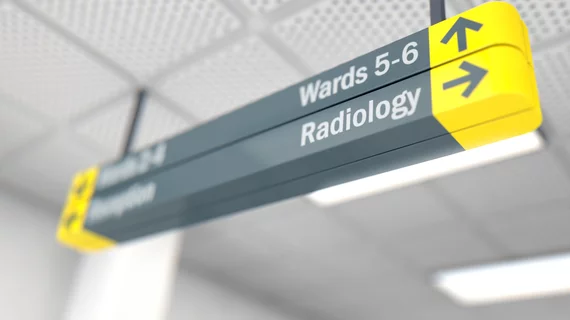Number of radiologists in private practice falls below 50% for 1st time in a decade
The number of radiologists in private practice has fallen below 50% for the first time since the American Medical Association began tracking this data in 2012.
About 49.7% of physicians in the specialty said they work in a setting wholly owned by physicians rather than a hospital, health system or other entity. That’s down from 55.4% of radiologists in AMA’s previous benchmark survey released in 2020 and 63.6% in the inaugural 2012 edition.
Radiology is not alone as, across most specialties, physicians are less likely than they were 10 years ago to work in a private practice setting. A myriad factors are combining to push providers into other ownership arrangements.
“The AMA analysis shows that the shift away from independent practices is emblematic of the fiscal uncertainty and economic stress many physicians face due to statutory payment cuts in Medicare, rising practice costs and intrusive administrative burdens,” association President Jesse M. Ehrenfeld, MD, said in a July 12 announcement of the survey results.
Across all docs surveyed, the number working in private practice has fallen from 60.1% in 2012 down to 46.7% as of last year. During the same time, the percentage of providers working in hospitals as direct employees or contractors increased from 5.6% up to 9.6%. For radiologists, the figure has doubled over the last decade, rising from 7.1% of the specialty employed by a hospital up to 14.2% in the latest survey. Among other changes in radiology, 51.5% surveyed said they worked in a single-specialty group as of 2022 (vs. 57.3% in 2012), 21.8% in a multi-specialty group (vs. 19.1%), 1.5% in solo practice (vs. 7.3%) and 11% who listed “other” (vs. 9.2%).
Four of five physicians across all specialties surveyed said the need to negotiate favorable payment rates with insurers was an important reason for seeking a sale of their practice. Improving access to costly resources and better managing payers’ regulatory and administrative requirements were the second and third most-popular answers, both cited by 70% of physicians.
Most specialties had a similar percentage of their profession working in private practice, ranging between 41%-49%. The few outliers included emergency medicine physicians at 37% and surgical subspecialists at 63.3%. Radiologists also were on the higher end of docs in single-specialty groups. OB/GYNs had the highest percentage at 55.8% while only 27.8% of internal medicine specialists said they worked in a single-specialty practice.
The AMA also highlighted a plummeting percentage of young docs who own their business. More than 44% of all physicians under 45 were self-employed in 2012, which fell to 31.7% by 2022.
“This suggests that a smaller share of each successive class of physicians has started their post-residency career in an ownership position,” the analysis noted.
The association conducted the survey between September and November, reaching a total of 3,500 physicians for a response rate of 31%.

